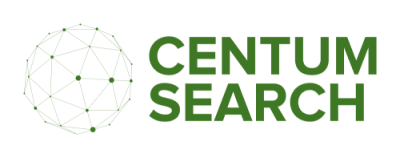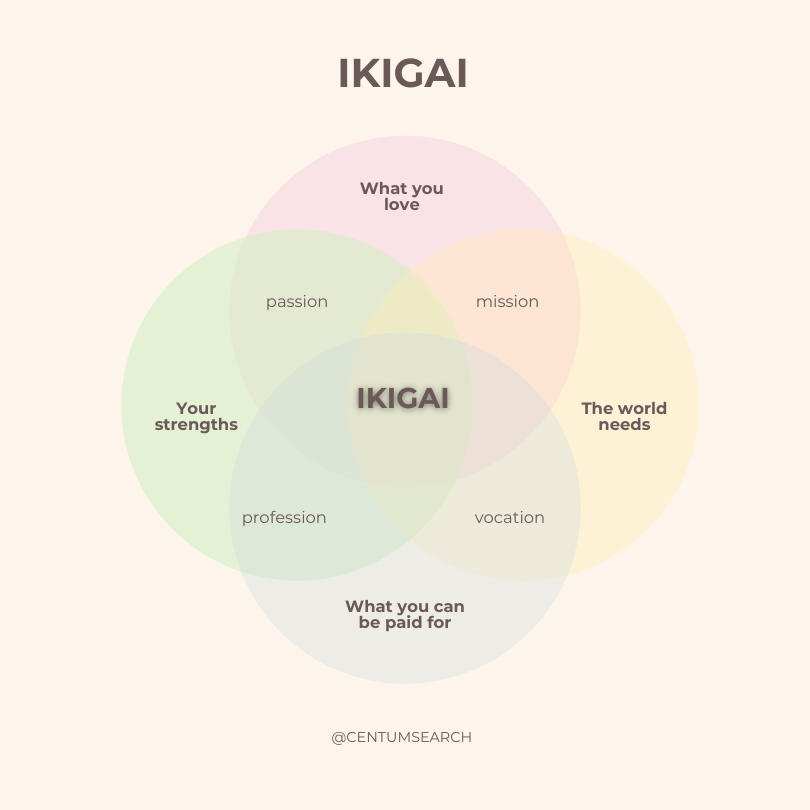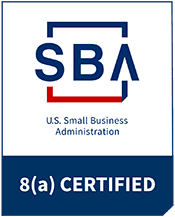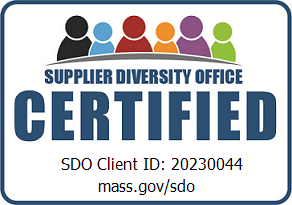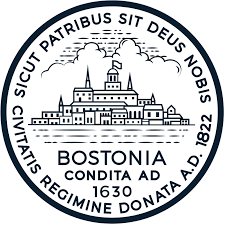Resources for Careers, Talent Acquisition and Management

Decades of research show hiring decisions based solely on technical skills and a single interview are proving insufficient for long-term success. While traditional interviews can assess qualifications and basic compatibility, they fall short of revealing the deeper cultural alignment that drives employee engagement, retention, and performance. This comprehensive guide explores why culture fit requires a more nuanced approach and provides actionable strategies for both employers and candidates to navigate this critical aspect of the hiring process. Why One Interview Can't Capture True Culture Fit The limitations of single-interview assessments become apparent when examining the complexity of cultural alignment. Harvard Business Review research emphasizes that poor culture fit can cost organizations between 50%-60% of an employee's annual salary due to turnover . This substantial financial impact underscores why superficial assessments during brief interview windows are inadequate for making such consequential decisions. Behavioral interviews, while structured and popular, have inherent limitations that prevent comprehensive culture assessment. They focus heavily on past experiences, which may not always predict future performance in new cultural environments. Additionally, well-prepared candidates can craft polished responses using frameworks, potentially masking their true workplace behaviors. The limitations become even more pronounced in remote and hybrid work environments, where cultural nuances are harder to observe and assess through traditional face-to-face interactions. Companies that rely solely on initial interviews often discover misalignments only after new hires struggle to integrate with existing team dynamics. Strategies for Employers to Deepen Culture Assessment Define Your Cultural DNA First Before evaluating candidates, organizations must clearly articulate their cultural identity, values, and practices. This foundational step involves identifying core values, work styles, and behavioral expectations that define success within the organization. Companies should develop a comprehensive culture playbook that outlines values, work environment, leadership style, and team dynamics. Implement Multi-Touchpoint Evaluation Progressive tech companies are moving beyond single interviews toward comprehensive assessment frameworks. This includes structured activities that simulate real workplace scenarios, allowing candidates to demonstrate their cultural adaptability in authentic contexts. Trial projects and collaborative tasks reveal how candidates communicate under pressure, approach problem-solving, and navigate team dynamics. Leverage Peer Interaction Assessments Involving current team members in the evaluation process provides invaluable insights into interpersonal compatibility. Peer interviews can assess candidates' communication styles, conflict resolution approaches, and collaborative tendencies more effectively than hierarchical interview structures. This multi-perspective approach helps identify candidates who will integrate successfully with existing team dynamics. Ask Strategic Behavioral Questions Employers should focus on behavioral questions tailored to their specific cultural values. Rather than generic queries, questions should explore real-world scenarios that reveal alignment with organizational principles. For example, if innovation is a priority, ask about times candidates introduced new ideas or processes that improved outcomes. Strategies for Candidates to Evaluate Cultural Alignment Research Beyond Job Descriptions Candidates should leverage multiple sources to understand organizational culture, including employee reviews on platforms like Glassdoor, LinkedIn insights, and company websites. This research provides a more comprehensive view of the actual work environment beyond polished recruiting materials. Ask Targeted Questions During interviews, candidates should inquire about specific cultural elements, including management styles, conflict resolution approaches, and professional development support. Questions about work-life balance, team collaboration methods, and company values provide crucial insights into organizational culture. Identify Red Flags Warning signs of poor cultural fit include disorganized interview processes, high turnover rates in the target team, vague responses about company culture, and pressure to accept offers quickly. These indicators often signal deeper cultural issues that could impact job satisfaction and career growth. Evaluate the Interview Process Itself The hiring process itself reveals significant cultural information. Companies with strong cultures typically have well-structured, respectful interview processes that involve multiple team members and provide clear communication throughout. Impact on Retention, Collaboration, and Performance Research consistently demonstrates that strong cultural alignment drives superior business outcomes. MIT Sloan Management Review and Glassdoor research shows that good corporate culture correlates with better financial performance, increased innovation, and greater customer satisfaction. Companies with strong cultures experience significantly higher employee engagement and retention rates. The collaborative benefits are particularly pronounced in tech environments, where cross-functional teamwork and rapid iteration require seamless communication and shared problem-solving approaches. Teams with strong cultural cohesion demonstrate better project outcomes, more effective knowledge sharing, and higher overall productivity. Culture-aligned employees show increased job satisfaction, stronger connections with colleagues, and greater commitment to organizational goals. They are more likely to remain with the organization long-term, reducing costly turnover and maintaining team stability. Building a Comprehensive Culture Assessment Strategy Successful tech organizations are implementing holistic evaluation frameworks that span the entire hiring and onboarding process. This approach includes pre-interview cultural research, multiple interaction touchpoints, collaborative project work, and structured integration periods. The assessment process should be ongoing rather than limited to initial hiring decisions. Cultural fit evaluation continues through onboarding, training, and daily workplace interactions, allowing organizations to support successful integration and identify potential misalignments early. For candidates, this evolution requires more proactive engagement in the evaluation process, treating cultural assessment as mutual discovery rather than one-sided evaluation. Both parties benefit from transparent discussions about values, work styles, and long-term goals. Reflection Questions: How might your organization's current hiring process evolve to better assess cultural fit while maintaining efficiency and candidate experience? What specific changes could you implement in the next 90 days to improve cultural alignment outcomes and build stronger, more cohesive teams? Sources: “(25) Culture Fit: The Interview You’re Missing (But Shouldn’t Be!) | LinkedIn.” Accessed June 15, 2025. https://www.linkedin.com/pulse/culture-fit-interview-youre-missing-shouldnt-ufkoc/ . Bouton, Katie. “Recruiting for Cultural Fit.” Harvard Business Review. Accessed June 15, 2025. https://hbr.org/2015/07/recruiting-for-cultural-fit . business.com. “The Importance of a Cultural Fit When Hiring.” Accessed June 15, 2025. https://www.business.com/articles/hire-for-cultural-fit/ . Group, Kofi. “Beyond Skills: How to Assess Cultural Fit in Interviews.” Kofi Group (blog), December 16, 2024. https://www.kofi-group.com/beyond-skills-how-to-assess-cultural-fit-in-interviews/ . Limited, HR com. “7 Ways To Determine Candidate Culture Fit (Besides Interview Assessments) - HR.Com.” Accessed June 15, 2025. https://www.hr.com/en/magazines/talent_acquisition/may_2023_talent_acquisition_excellence/7-ways-to-determine-candidate-culture-fit-besides-_lhtfxxte.html . “MIT Sloan Management Review And Glassdoor Introduce The ‘Culture 500’ | 2019-06-25 | FLOOR Trends & Installation.” Accessed June 15, 2025. https://www.floortrendsmag.com/articles/105030-mit-sloan-management-review-and-glassdoor-introduce-the-culture-500 . Smiles at Work | The Official Happily.ai Blog. “The Science of Culture Fit: Moving Beyond Gut Feelings in Hiring,” January 18, 2025. https://blog.happily.ai/the-science-of-culture-fit-moving-beyond-gut-feelings-in-hiring/ . Staff, Dice. “The Biggest Tech Hiring Red Flags Related to Cultural Fit.” Dice Hiring (blog), May 30, 2025. https://www.dice.com/hiring/recruitment/hiring-red-flags-cultural-fit . Team, Spark Hire Content. “7 Ways to Better Assess Candidates During Screening for Culture Fit Within Your Organization | Spark Hire,” February 28, 2025. https://www.sparkhire.com/learn/screen-candidates/7-ways-to-assess-candidates-for-culture-fit/ . Tech Interview Preparation – System Design, Coding & Behavioral Courses | Design Gurus. “What Are the Disadvantages of Behavioral Interview?” Accessed June 15, 2025. https://www.designgurus.io/answers/detail/what-are-the-disadvantages-of-behavioral-interview . “The Power of Culture Alignment.” Accessed June 15, 2025. //www.workzinga.com/ .

Hiring your first executive is one of the most consequential moments in a startup’s journey. The right leader can unlock growth, instill operational discipline, and set the tone for your company’s culture. The wrong hire, however, can create costly setbacks—Harvard Business Review notes that hiring mistakes are not only expensive but can also sap morale and slow down your company’s momentum. This framework is designed to guide startup founders through a comprehensive, step-by-step process for hiring senior leadership, with deep dives into each critical phase. 1. Clarify the Role Every successful executive search starts with rigorous self-assessment. Before you post a job or reach out to your network, ask yourself: What does my business truly need at this stage? Are you seeking to accelerate product development, scale operations, or break into new markets? Pinpoint the precise outcomes you expect from this hire and how their leadership will move the company forward. It’s tempting to create a wish list of every skill or credential you hope for, but this can backfire. Overloading a job description with too many requirements can deter capable candidates, especially those from non-traditional backgrounds or adjacent industries. Instead, focus on the essentials: Which skills and experiences are truly non-negotiable? What would success look like for this leader in the first six, twelve, and twenty-four months? Bring your co-founders, key team members, and trusted advisors into this process. Their perspectives help you avoid blind spots and ensure alignment on the role’s scope and reporting lines. As McKinsey emphasizes, clarity in role definition and expectations is vital for attracting the right candidates and ensuring a smooth recruitment experience. Remember, not every challenge requires a full-time executive. Sometimes, a senior individual contributor or interim leader can help validate the need for a permanent hire. Be honest about whether you’re ready for this step—rushing into an executive hire before your organization is prepared can create more problems than it solves. 2. Craft Your Employer Value Proposition Once you’ve clarified the role, it’s time to turn your attention inward. Top executive candidates are rarely scanning job boards—they need to be inspired. Your employer value proposition must go beyond salary and perks. What is your company’s mission? How will this leader make a tangible impact? What is unique about your culture and team? Share your startup’s growth story, funding milestones, and the unique challenges ahead. Be transparent about the equity on offer, the vesting schedule, and what success could look like for an early leader. As a16z and Greylock both note, “As a CEO, the majority of your job is selling—convincing the best people in the world to come work for you”. Tailor your pitch to each candidate’s motivations. Some will be drawn by the promise of ownership, others by the thrill of building something from scratch, and some by the opportunity to shape a company’s culture from the ground up. Don’t underestimate the power of your company narrative. According to Greylock, a compelling story that is authentic and transparent about both the opportunity and the challenges ahead is critical for winning over top executive talent. 3. Build a Hiring Committee Executive hiring is a team sport. Resist the urge to go it alone. Instead, assemble a small, diverse hiring committee that includes founders, key team members, and trusted advisors or board members. This group will not only help you assess candidates from multiple angles—technical skills, leadership style, and cultural fit—but will also lend credibility to your process. Assign clear roles within the committee. Decide who will screen resumes, who will lead interviews, and who will own the final decision. Set expectations for timelines, confidentiality, and communication. By involving your committee early, you reduce bias, ensure buy-in for the final hire, and create a more robust, founder-friendly process. A well-structured committee also signals to candidates that your company values collaboration and diverse perspectives, which can be a major selling point for mission-driven leaders. 4. Source Strategically Finding executive talent is not about casting the widest net, but about fishing in the right ponds. Start with your network: reach out to investors, mentors, and industry peers for warm introductions. These trusted connections often surface candidates who are already pre-vetted for alignment with your mission and culture. Don’t overlook targeted outreach. LinkedIn, professional associations, and industry events can help you identify passive candidates who may not be actively looking but are open to the right opportunity. For especially hard-to-fill roles, or if your own network isn’t yielding results, consider engaging an executive search firm. While these firms come at a cost, they often can accelerate your search and bring access to “hidden” candidates. Set a clear sourcing timeline. If you haven’t found strong candidates within four to six weeks, it may be time to bring in external help to keep your search on track. Above all, prioritize candidates with startup experience—they’re more likely to thrive in environments that demand agility, resilience, and hands-on leadership. 5. Interview and Evaluate With a shortlist in hand, it’s time to dig deep. Executive interviews should go far beyond the resume. Structure your process to assess both competence and fit. Use consistent questions and scorecards to fairly assess candidates. Present real-world scenarios or case studies relevant to your business, and observe how candidates approach ambiguity, decision-making, and team leadership. Cultural alignment is just as important as technical expertise. Probe for values, adaptability, and risk tolerance. Startup leadership is not for everyone, and it’s better to uncover misalignments early. Always conduct thorough reference checks, ideally with both superiors and direct reports. These conversations can validate claims, uncover red flags, and provide a fuller picture of the candidate’s leadership style. Involve multiple committee members in the interview process to get a 360-degree view. Don’t rush. Many failed executive hires result from skipping reference checks or relying on gut feel alone. As McKinsey research shows, a rigorous, multi-step process dramatically increases the odds of a successful hire. 6. Use Transparency & Mentorship Honesty is your best recruiting tool. Be upfront about your startup’s stage, challenges, and expectations. Share the full picture—candidates should know what they’re walking into, challenges and all. This not only builds trust but also attracts leaders who thrive in uncertainty and are ready to roll up their sleeves. Invite mentors or advisors into the process. Let candidates meet your support network. This demonstrates that you’re invested in their success and provides them with additional context and resources. The best leaders value transparency and will ask tough questions. Welcome this—it’s a sign of a true executive mindset. McKinsey’s approach to transparency includes revising job descriptions to be more specific and launching programs that offer authentic insights into company culture, which helps candidates make informed decisions. 7. Offer with Equity Early-stage startups compete on upside, not cash. Structure offers that balance of risk and reward. Benchmark equity grants against market data for similar-stage companies. Be clear about vesting, dilution, and exit scenarios. Transparency here is key—explain how the equity package could evolve with future funding rounds and company milestones. Be upfront about what you can offer in terms of salary, and how compensation might change as you grow. Expect negotiation—top candidates will want to understand the full package and their impact on company growth. As SHRM recommends, clarity and fairness in your offer process help build trust and set the tone for your working relationship. It’s often helpful to bring in a third party or advisor to help with negotiations, which can keep the process objective and maintain goodwill between founder and candidate. 8. Onboard for Influence The first 90 days are critical for executive success. Don’t just hand over the reins and hope for the best. Provide structured onboarding: share company history, introduce key stakeholders, and ensure your new leader has access to all the information they need. Identify early wins that allow your new executive to build credibility and momentum. Schedule regular check-ins to address challenges, clarify expectations, and reinforce alignment. Empower your new leader with the autonomy and resources to make decisions and drive change. Remember, onboarding is not plug-and-play—founders should remain actively engaged to ensure a smooth transition. “Hiring the wrong person may be the most costly mistake a business can make.” — Harvard Business Review Great leadership hires are transformative. By following this framework, founders can dramatically increase their odds of landing—and keeping—the right executive to fuel their next stage of growth. Sources: “(11) Post | LinkedIn.” https://www.linkedin.com/posts/lancetanaka_finding-your-best-talent-most-of-my-clients-activity-7327660044613799937-98sM/ . “(11) Post | LinkedIn.” https://www.linkedin.com/posts/swingsearch_the-first-principles-of-executive-hiring-activity-7165727685292351488-ffX_/ . Bain Capital Ventures. “How To Hire Your First Leadership Team.” Accessed July 6, 2025. https://baincapitalventures.com/insight/how-to-hire-your-first-leadership-team-as-a-startup-founder/ . Built In. “5 Tips for Founders Hiring Their Executive Teams.” Accessed July 6, 2025. https://builtin.com/articles/hiring-executive-team . Cappelli, Peter, and Dane E Holmes. “Your Approach to Hiring Is All Wrong.” Harvard Business Review, 2019. Faith, Holly Rose. “The Executive Recruiting Playbook.” Greylock (blog), September 28, 2021. https://greylock.com/greymatter/the-executive-recruiting-playbook/ . Fox, Christy. “Executive Search for Startup Companies: Building a Leadership Team from Scratch.” Direct Recruiters Inc. (blog), January 15, 2025. https://directrecruiters.com/hiring-manager-advice/executive-search-for-startup-companies-building-a-leadership-team-from-scratch/ . “Startup Hiring - Guide to Executive Hiring for Your Startup,” July 2, 2024. https://startupsavant.com/startup-center/guide-to-executive-hiring-for-your-startup .

In 2025, the difference between good and exceptional talent often extends far beyond the technical skills listed on a résumé. While technical proficiency remains essential, research consistently shows that high-performing tech professionals possess distinct qualities that drive long-term success and business impact. For both candidates aiming to stand out and talent acquisition teams seeking to identify future stars, understanding these deeper differentiators is crucial.
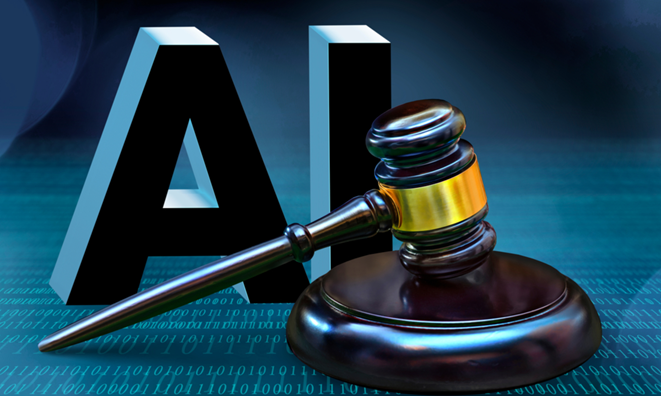
As artificial intelligence continues to accelerate innovation and disrupt traditional workflows, the policies that govern its use are struggling to keep pace. For tech leaders, founders, and policymakers alike, understanding the evolving regulatory landscape isn't just about compliance—it's about staying competitive, protecting stakeholders, and shaping a responsible future. This article explores how AI policy is influencing hiring practices, business strategy, and global standards, and why now is the time for thoughtful, proactive governance.

Hiring the right engineers is one of the most important decisions tech leaders make. A strong technical interview should: · assess skills fairly, · provide insight into problem-solving and team fit, · and leave candidates with a great impression. This guide explores how to create a structured, unbiased process that predicts future performance and helps you make the best hires. The Importance of a Fair and Effective Technical Interview Technical interviews are a crucial part of the hiring process, especially for software engineers. According to a 2019 LinkedIn report, 83% of tech recruiters believe that the technical interview is the most important part of the hiring process. However, this type of interview can also be a source of stress and anxiety for candidates, potentially affecting their performance and the fairness of the evaluation. Creating a fair technical interview focuses not only on assessing technical skills but also problem-solving, creativity, and a candidate’s potential to thrive within your team. It’s also about ensuring consistency, reducing bias, and providing every candidate with the same opportunity to succeed. A well-structured interview should: Encourage candidate engagement as candidates are more likely to pursue offers if they feel respected and valued during the process. Ensure objective evaluations to help reduce bias and focus on measurable outcomes. Identify hidden strengths which can reveal a candidate’s adaptability, communication skills, and learning potential. However, many hiring leaders unintentionally lose top talent by relying on outdated or overly complex interview practices. Here's how to avoid those pitfalls and make your process both fair and effective. Step 1: Defining Your Evaluation Criteria Before starting interviews, clearly define what you're looking for in this hire. While technical proficiency is paramount, it's not the only factor. A 2023 Stack Overflow survey revealed that 40% of software developers prefer working for companies with a collaborative culture over ones that simply offer competitive pay. Your interview process should assess both coding skills and how well a candidate will fit into your team dynamics and company culture. Whether through behavioral questions or situational exercises, be sure to test for attributes that will determine their long-term success. Step 2: Building the Right Technical Assessment Creating a fair technical interview requires careful consideration. Ensure the assessment aligns with the tasks the candidate will perform in the role. For example, if you're hiring a front-end developer, focus on tasks involving HTML, CSS, JavaScript, or frameworks like React. For a back-end developer, focus on database design or API development. At Centum Search, we’ve seen how well-designed coding challenges provide valuable insight into a candidate’s thought process. Coding tests, whiteboard exercises, or live coding sessions showcase not only a candidate’s problem-solving ability but also their approach to architecture, optimization, and communication. However, technical assessments should go beyond coding accuracy. For instance, you could ask the candidate to explain their thought process as they solve a problem. This not only reveals problem-solving abilities but also tests their communication skills—crucial for engineers in collaborative environments. Step 3: Evaluate More Than Just the Code While coding correctness is essential, it’s just one piece of the puzzle. Exceptional candidates also demonstrate strong problem-solving, adaptability, and clear communication. When evaluating candidates, look beyond the technical solution and: Ask questions like, “Why did you choose this approach?” or “What trade-offs did you consider?” Assess their thought process and whether their explanations are logical and clear. Listen to how candidates ask follow-up questions to better understand the task and how they articulate complex solutions. Assessing soft skills will be beneficial in helping you identify the most well-rounded candidates for your team. Step 4: Encourage Reflection to Assess Growth Potential Reflection questions are invaluable for assessing a candidate’s ability to learn and grow. These questions gauge adaptability, self-awareness, and long-term potential. Ask candidates to reflect on their approach with questions like: “What would you do differently if given more time or resources?” “How could this solution be improved for larger-scale systems?” Reflection encourages candidates to think beyond the immediate task and demonstrates their ability to learn from experiences and improve their work. Step 5: Mitigating Bias and Ensuring Consistency A fair technical interview means addressing bias in the process. Research by Harvard Business Review shows that unintentional biases can skew evaluations, with candidates from underrepresented groups receiving lower ratings despite equal qualifications and performance. Standardizing the interview process—using consistent technical questions or implementing a rubric to score responses—helps reduce bias. Consider panel interviews with diverse team members to provide a more balanced perspective on a candidate’s abilities. Step 6: Create a Positive Candidate Experience A fair interview also means providing candidates with clear feedback and next steps. This step not only reflects well on your company but also creates a positive experience, regardless of whether the candidate is selected for the role. Glassdoor research shows that 77% of job seekers are more likely to accept an offer from a company that provides timely feedback. Constructive feedback helps candidates grow, and even if they’re not the right fit for your team, they may be a great fit elsewhere in your company—or a strong candidate for your future roles. By fostering a transparent process, you also build your reputation as an employer of choice, attracting top talent. Remember, the interview process is a two-way street—candidates are evaluating your company just as much as you’re evaluating them. A positive interview experience can enhance your chances of securing top talent and improving your company’s reputation. To ensure a great candidate experience: Be transparent and share the interview format, timeline, and expectations upfront so candidates can prepare. Provide constructive feedback after the interview, even to candidates who aren’t selected. This shows respect for their time and could encourage future referrals. Stick to the agreed schedule and avoid overly long or complex interview loops. The Payoff of a Fair and Effective Interview Process Creating a fair and effective technical interview process is more than just evaluating a candidate’s technical skills. It ensures consistency, reduces bias, and fosters a positive experience that benefits both the candidate and your team. By implementing clear problem statements, evaluating candidates holistically, using realistic scenarios, and fostering a positive experience, you’re not only improving your chances of hiring top talent but also contributing to a stronger, more collaborative team culture. At Centum Search, we help Engineering organizations hire faster, easier and more predictably. A great interview process is key to making the best hiring decisions—ensuring your team’s long-term success and growth.
